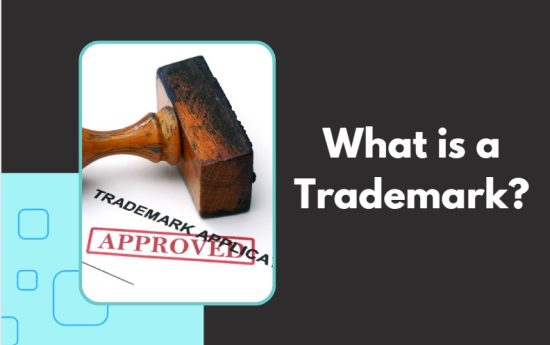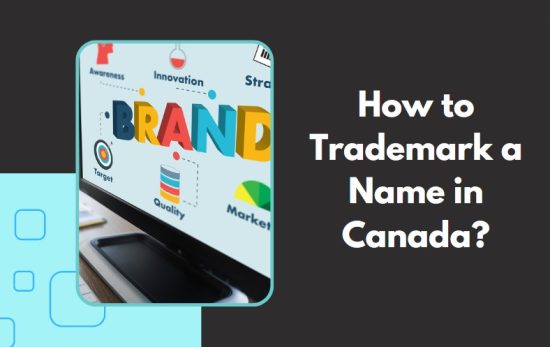Are you a Canadian business owner or entrepreneur looking to protect your brand’s identity? Then, trademarking your name is essential! But how do you go about trademarking a name in Canada? It may seem like a daunting process, but don’t worry; we’ve got you covered. In this comprehensive guide, we’ll take a look at everything you need to know about the process of trademarking a name in Canada. From what can be trademarked to the benefits and costs involved, we’ll cover it all. So get ready to learn how to protect your brand with ease!
What is a Trademark?

A trademark is a design, word, or phrase that identifies and sets one company’s products or services apart from those of a rival. It can be a logo, slogan, product name, or any other distinctive feature that sets your brand apart.
The purpose of trademarks is to prevent confusion among consumers about the origin of products and services. When you have a registered trademark, it gives you exclusive rights to use and protect your brand identity.
In Canada, trademarks are governed by the Canadian Intellectual Property Office (CIPO). The registration process involves applying to CIPO and outlining the elements you wish to trademark.
Once approved, your trademark will be protected against infringement for 10 years, with the option to renew indefinitely. This means no one else can use your mark without permission.
Trademarks are essential tools in protecting intellectual property and building brand recognition. They allow businesses to establish their unique identities while preventing others from copying their ideas.
What Can Be Trademarked in Canada?
When it comes to trademarking in Canada, the first question that arises is what can be trademarked. The answer is simple: any sign, design, symbol, or combination thereof that distinguishes your products or services from those of others can be registered as a trademark.
This includes names, slogans, logos, and even sounds. A unique and distinctive name for your company or product line is an excellent place to start when considering trademarks. It’s essential to ensure that the selected name isn’t already in use by another company, as this could lead to legal disputes down the road.
- Slogans are catchphrases used alongside a brand name to help customers remember the business better. They should be short but powerful enough to leave an impact on potential client’s minds.
- Logos are visual representations of a brand and are often memorable due to their uniqueness and simplicity. They also help create a strong brand identity.
- Sound marks refer to specific audio elements like jingles or musical notes used in advertisements; they’re relatively rare but still possible if they meet specific criteria set by the Canadian Intellectual Property Office (CIPO).
How to Trademark a Name in Canada?

If you are looking to trademark a name in Canada, there are several steps that you need to follow.
- The first step is searching for existing trademarks that may be similar or identical to the name you want to trademark. This can be done through the Canadian Intellectual Property Office (CIPO) website.
- Once you have confirmed that your desired name is available, you should then apply with CIPO. Your application must include a description of how the name will be used and what goods or services it will represent. It’s important to note that this process can take up to 18 months, so patience is key.
- After submitting your application, it will go through an examination process where CIPO will review it for compliance with its guidelines and regulations. If approved, your trademark will be published in the Canadian Trademarks Journal for two months, allowing others who may object to its registration time to do so.
- If no objections are made within those two months or they are successfully resolved by negotiation or the abandonment of opposing claims on either side, congratulations! You now have a registered trademark in Canada and can begin using your unique brand identity without worrying about infringement from competitors.
The Benefits of Trademarking a Name in Canada
Trademarking your name or logo can bring a lot of benefits to your newly started business. In Canada, having a registered trademark gives the owner exclusive rights to use that mark across the country for 15 years, renewable indefinitely.
- One of the biggest advantages of having a registered trademark is protection against infringement. It allows you to take legal action against anyone who tries to use your name or logo without permission, giving you peace of mind when it comes to protecting your brand.
- Having a registered trademark also adds value to your business as it becomes an intangible asset that can be licensed, assigned, or even sold like any other property. Investors are more likely to invest in businesses with strong intellectual property portfolios.
- In addition, trademarks help build brand recognition and loyalty among consumers by distinguishing products from those of competitors in the marketplace. This means customers will associate quality products and services with your brand and return for repeat purchases.
- Registering a trademark helps prevent others from using similar names or logos that could confuse customers. Avoiding confusion is crucial in maintaining customer trust and preserving the reputation you have built over time.
There are numerous benefits associated with registering a trademark in Canada beyond just legal protection; it’s an investment in building long-term success for any business.
The Costs of Trademarking a Name in Canada
Trademarking a name in Canada can be costly, but it’s important to protect your intellectual property. The cost of trademark registration varies depending on several factors, such as the number of classes you want to register under and whether you hire a lawyer or agent.
The Canadian Intellectual Property Office (CIPO) charges CAD 347 for one class of goods or services. If you’re registering for multiple classes, the fee increases with each additional class. Hiring a lawyer or agent can also add to the cost, but they can offer valuable assistance throughout the process.
In addition to application fees, there are ongoing costs associated with maintaining your trademark registration. You must pay renewal fees every 10 years and file declarations of use to prove that your mark is still being used in commerce.
While registering for a trademark may seem like an expensive endeavour, it is essential in protecting your brand and preventing others from using similar marks without permission. It’s important to budget for these costs when considering whether or not to pursue trademark registration in Canada.
The Process of Trademarking a Name in Canada

The process of trademarking a name in Canada can seem daunting, but it is an important step for protecting your brand.
- The first step is conducting a thorough search to ensure that the name you want to trademark is not already in use by someone else.
- Once you have confirmed that your desired name is available, you will need to file a trademark application with the Canadian Intellectual Property Office (CIPO). This application should include detailed information about your business and why you are seeking a trademark.
- After submitting your application, it will be reviewed by CIPO to ensure that all requirements are met. If there are any issues or concerns, they may request additional information or documentation from you.
- Assuming everything goes smoothly with your initial submission, the next step is the publication of your trademark in the Trademarks Journal. This allows others to object if they feel there could be confusion between their existing trademarks and yours.
- If no objections are raised within 2 months of publication, then CIPO will approve and register your trademark. Once registered, it’s important to monitor for any infringement on your rights as a trademark owner.
While the process may take several months and require some effort on your part, registering a trademark can provide valuable protection for your brand in Canada.
Conclusion
Trademarking your name in Canada is a wise investment that can benefit your business both legally and financially. It protects your brand, helps you stand out from competitors, and establishes consumer trust.
The process of trademarking a name in Canada may seem intimidating at first, but with the right guidance, it can be done smoothly. By following the steps outlined above, you will be well on your way to securing exclusive rights to use your brand name within Canada.
Remember that trademark registration is an ongoing process that requires maintenance and monitoring. Stay vigilant against potential infringement or misuse of your mark by others.
Investing time and resources into protecting your intellectual property now can save you headaches down the road. So take action today to protect one of the most valuable assets of any business—its name!
FAQs on how to trademark a name in Canada
1. Can I use a trademarked name in Canada?
With a few exceptions, the owner has the sole right to use the trademark across Canada in connection with any products or services for which the trademark has been lawfully registered. Such a privilege may be utilized in any appropriate provincial court as well as the Federal Court.
2. How do I register a trademark by myself in Canada?
You must apply to the Canadian Intellectual Property Office (CIPO) to register a business or trademark in Canada. The government filing fee of $347.35 in 2023 plus an extra $105.26 in 2023 for each additional class of goods and services beyond the first must be submitted with a CIPO trademark application.
3. Do I need a lawyer to register a trademark in Canada?
You could submit a trademark application by yourself. However, one of the best investments a company can make when launching a new brand is engaging a lawyer and having that lawyer undertake the necessary searches.
4. What is the difference between registered and trademark?
Companies frequently use the trademark symbol (TM) on a name, phrase, word, or design that serves as a representation of their company. A mark that has been registered as a trademark with the United States Patent and Trademark Office (USPTO) is denoted by the registered symbol (R).










